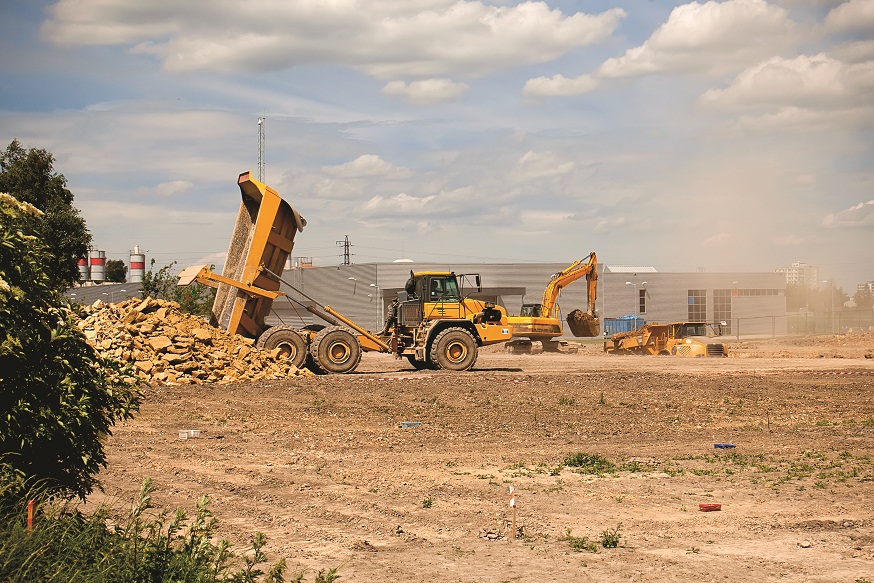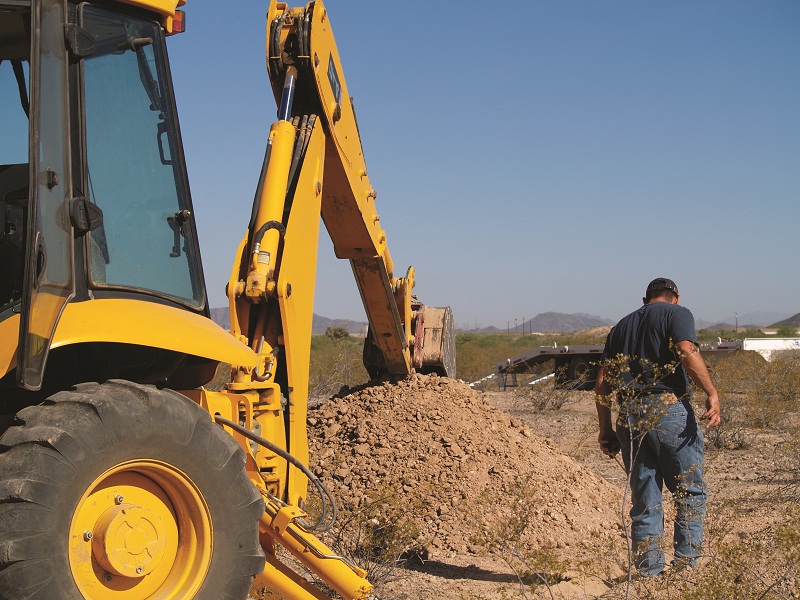
 The job of the site-selection professional is to not only eliminate locations from consideration, but to do it swiftly based upon detailed analysis. In prior years, the site-selection process may have taken 12-18 months or longer, but today, a typical project might take 4-6 months and a large project 9-12 months to reach completion. This process has accelerated dramatically over time for a few key reasons.
The job of the site-selection professional is to not only eliminate locations from consideration, but to do it swiftly based upon detailed analysis. In prior years, the site-selection process may have taken 12-18 months or longer, but today, a typical project might take 4-6 months and a large project 9-12 months to reach completion. This process has accelerated dramatically over time for a few key reasons.
The ease of access to vast amounts of information, mainly due to the Internet and electronic databases, provides us the ability to quickly acquire information and complete detailed analyses. This approach creates an opportunity to move the site-selection and economic-development incentive procurement process forward quickly. However, having the right team and process in place is essential in preventing missteps that can result in long-term ramifications for companies.
Any successful site-selection process must begin with a strong team, an excellent set of assumptions, and a list of key decision drivers for the project. Without the right team and accurate assumptions, the process cannot deliver the best results. Key persons in finance, legal, operations, human resources, real estate/facilities, information technology and management all have important input to share. Some companies have a well-defined set of objectives and a team of subject-matter experts to work with the site-selection consultant, while other companies need a site-selection company to work with them closely to put a project team in place. Either way, this step is vital in order to get started.
The Role of the Site-Selection Consultant
• Understand the goals of the client.
• Investigate all viable options.
• Net the best results to offset project costs.
• Get the project across the finish line.
• Ensure incentives are realized and maximized.
Site-Selection Checklist
• Develop the project team. Get the right experts in the right positions on the team.
• Understand the company’s key objectives for the site-selection process.
• Finalize the project’s assumptions.
• Weigh the company’s decision drivers.
• Identify the preliminary set of locations to be considered.
• Gather initial information to eliminate sites within that preliminary set of locations.
• Recommend final sites to be considered for the project.
• Collect additional detailed information to analyze final location selections.
• Visit final site locations.
• Prepare location modeling of final sites visited to make comparison.
• Complete economic development incentive negotiations.
• Develop final analysis for project summary and operating costs.
• Recommend first and second choice locations for the project.
• Secure all project-related approvals.
• Finalize all agreements between the company and the governmental body.

Do’s and Don’ts
DO…..
• Form a solid project team: Having the right people, experts in their areas, in the right positions is key to a successful project.
• Planning is essential: Significant effort must be dedicated in the planning stages of any site-selection project. Carefully thought-through decisions can eliminate expensive mistakes and provide for accelerated decision making down the road.
• Communicate clearly with key players: Ensure internal and external players are identified and frequent, clear communication takes place.
• Understand the critical decision drivers: Develop the key criteria to be used by company officials to select a location for the project.
• Make quick and well-informed decisions: Do not fall into the trap of “analysis paralysis” during the process.
• Seek expert guidance: No matter the sophistication level of your company and its employees, site selection is not a key operating component of a business. A site-selection firm does this type of work every day. They are experts in understanding, assimilating, and analyzing the information needed to make decisions to meet a company’s goals.
• Expect the unexpected: Understand that surprises will come up during the process and be prepared to deal with them. The most important thing is to take care of any surprises prior to the company making a location decision, to ensure future problems do not arise.
DON’T…..
• Compromise confidentiality: Confidentiality is key for all participants in the site-selection process.
• Let the volume of information overwhelm and slow down the process: In today’s world, there is a lot of information available to assist in the site-selection process. This can create a situation where the process becomes “bogged down” and deadlines are missed.
• Solely rely on numbers: While the analysis of the numbers that impact the bottom line is a very important part of the site-selection process, other factors can impact decisions. The “art” side of the site-selection process relates to a gut feeling regarding confidence in the ability of governmental and economic development organizations to deliver on their promises.
 Trends in Site Selection
Trends in Site Selection
Access to a labor market and lowering operating costs have also emerged as real drivers in the site-selection process. Labor costs are a large part of overall operating costs for companies. The dollar figure per hour, the benefits package (including insurance and retirement and savings plans), worker’s compensation and unemployment insurance are all parts of this analysis.
Some states have lower unemployment insurance rates. Others have lower worker’s compensation rates. These factors are taken into consideration when analyzing potential sites for a new facility, relocation or consolidation. It may also become less attractive for a company to locate in a highly unionized area when unemployment insurance rates are also high. Labor availability and cost are consistently hot topics in the site-selection process. In addition, the hotly contested issue of Right-to-Work has been in the forefront of news in several states recently. There are currently 22 Right-to-Work states in the United States, while 28 states are not Right-to-Work. There are polls, surveys and studies that support both sides of the issue. The fact is that manufacturing and distribution companies are more likely to look at this factor during the site-selection process than ever before.
Other prominent considerations in the efforts to reduce overall operating expenses include corporate income taxes, property tax rates, economic development incentive programs, and regulatory environment. Every project has different issues to consider during the process and it is important to thoroughly vet the issues that will drive the final decision throughout the evaluation.
Site selectors are finding themselves not only looking at the tax structure of a particular community, but the overall business and regulatory climate of the state in which a potential site is located. Local tax burden plays an important role and the level and means by which the state tax is collected is a factor to take under serious consideration when examining operating costs. Destination-based and origin-based taxes need to be examined as part of this due diligence process.
 In the state of Washington, destination-based taxes are collected. If a company ships a product from it’s location in one city to a destination in another city, the sales tax is based on the tax rate of the destination city. If the product or service is shipped to or executed in a city outside of the state of Washington, Washington collects no tax.
In the state of Washington, destination-based taxes are collected. If a company ships a product from it’s location in one city to a destination in another city, the sales tax is based on the tax rate of the destination city. If the product or service is shipped to or executed in a city outside of the state of Washington, Washington collects no tax.
Indiana, Texas and Arizona have a corporate tax base generated from origin-based taxes. This tax is collected primarily from property taxes and sales tax in the state where the service or product is located, regardless of where the product is shipped or service is executed. A distribution or manufacturing facility that may ship the majority of its products outside of the state in which it is located could have a corporate tax burden savings if it is located within a state that employs destination-based taxes.
Changes in Incentive Programs Impact Site-Selection Decisions
Economic development and governmental entities are well aware of the impact economic development incentives can have on site-selection decisions. Companies should never make a location decision based upon economic development incentives alone. Factors such as real estate, labor costs, tax structure, transportation costs and/or proximity to technology assets must be right for a company to make a good decision regarding a location.
In terms of the economic development incentive issue, many cities and states throughout the country are implementing new programs or enhancing existing ones. Despite the very challenging economic conditions during the past few years, the use of local and state economic development incentives has continued. In addition, some communities and states have become more aggressive in terms of commitments made in support of projects.
 Related to this creative is another incentive issue that creates enterprise or other specific “zones” that qualify for lower tax rates. Enterprise zones have typically been formed under the auspices of creating an attractive reason to bring growth and income to a specific area that is distressed. Economic development incentives can also be tied to the specific location and made available based on certain criteria being met and the project locating within that “zone.”
Related to this creative is another incentive issue that creates enterprise or other specific “zones” that qualify for lower tax rates. Enterprise zones have typically been formed under the auspices of creating an attractive reason to bring growth and income to a specific area that is distressed. Economic development incentives can also be tied to the specific location and made available based on certain criteria being met and the project locating within that “zone.”
However, several factors are possible obstacles in this situation, including potentially the lack of proper transportation, skilled labor, environmental problems and availability of financing.
Although there are more than 40 states with designated enterprise zones and some, such as California, that are calling for improvement and expansion of enterprise zone legislation, others are emerging with “by-right” policies. This is a more inclusive method by which incentives can be made available to a broader range of companies in the site-selection and incentive-procurement process.
“By-right” refers to the structure in which a company can apply for certain tax incentives by meeting the specified criteria regardless of the location in which it is going to be operating. In some cases, states have designated their entire state as an enterprise zone, but the criteria vary greatly from state to state. Some states, such as New Mexico, have incentives tied to more of a blend of enterprise zones. Certain criteria must be met for specific incentives to be tied to a specific area and other criteria must be met in order to be tied to the entire state. Kansas has designated the entire state as an enterprise zone and as long as a company meets the criteria set forth by that state for those affiliated incentives, dollar amounts and forms of incentives can be negotiated.
 In 2011, in an effort to improve the suffering state economy, the state of Arizona scrapped its entire enterprise zone program. The state approved the Arizona Competitiveness Package. The package includes a $9,000 tax credit for each new job created, provided that it pays above the particular county’s median wage. The program also requires at least 65 percent of employee health care costs to be covered by the employer. There is a $30 million per year cap on the amount of credits that can be awarded statewide. In addition to this component of the package, Arizona included a reduction in corporate income tax from 6.9 percent to 4.7 percent.
In 2011, in an effort to improve the suffering state economy, the state of Arizona scrapped its entire enterprise zone program. The state approved the Arizona Competitiveness Package. The package includes a $9,000 tax credit for each new job created, provided that it pays above the particular county’s median wage. The program also requires at least 65 percent of employee health care costs to be covered by the employer. There is a $30 million per year cap on the amount of credits that can be awarded statewide. In addition to this component of the package, Arizona included a reduction in corporate income tax from 6.9 percent to 4.7 percent.
Tying together the importance of overall reduction of operating costs with the teaming of corporate tax burdens and labor costs can result in significant savings for a company looking to expand, consolidate or relocate. The changes, some sweeping, in tax regulations, business and regulatory climates, and economic development incentive programs, are evolving at a quick pace as states and regions work hard to spur growth in their communities. This high level of competition should prove to create outstanding opportunities for companies with site-selection projects in 2012 and beyond. The right team, solid planning and understanding of corporate objectives, detailed research and analyses of accurate data, and aggressive and knowledgeable economic development incentive negotiations can result in a positive outcome in operating cost reduction and improving the overall profitability of a company.

